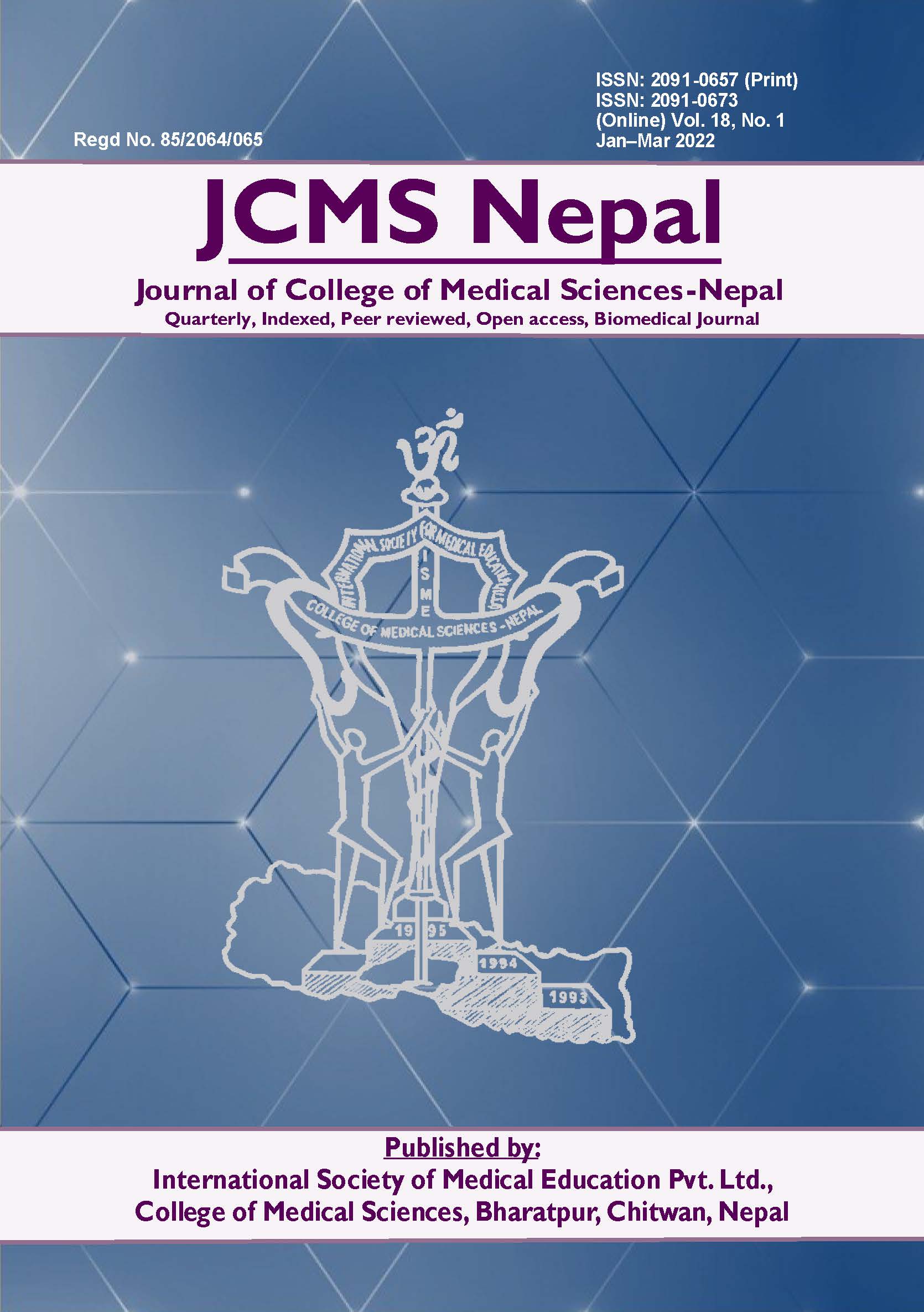Clinicomycological Study of Superficial Mycoses: A Changing Trend of Increasing Non-dermatophyte Mold Infection
DOI:
https://doi.org/10.3126/jcmsn.v18i1.41141Keywords:
mycoses; dermatophytosis; trichophyton rubrum; non-dermatophyte molds (NDM).Abstract
Introduction
Superficial mycoses refer to the diseases of skin and its appendages caused by fungi. The geographical distribution of fungi may change from time to time; hence this study was planned. To find out the prevalence of different clinical types of dermatomycoses and dermatomycotic mold infections and their etiological agents.
Methods
A total of 560 clinically diagnosed cases of superficial mycoses visiting tertiary care centre for a period of two years were included in the study. Specimens like skin scrapping, nail clipping, hair were collected and subjected to KOH mount and culture. Identification of species was done by macroscopic examination of culture, tease mount, slide culture and Germ tube test. Wood’s lamp examination was also performed.
Results
Superficial mycoses were more common in the age group of 21-30 years (33.22%) and in males (71.96%). Tinea corporis 163/469 (34.75%) was the commonest clinical type in dermatophytosis followed by tinea cruris 145/469 (30.92%). 53.04% cases were positive by direct microscopy and 62.86% cases showed culture positive. Out of 352 culture positive cases, dermatophytes were isolated in 80.11% followed by yeasts (15.91%) and non-dermatophyte molds (NDM) (3.98%). The most common isolate among dermtophytosis was Trichophyton rubrum 156/282 (55.32%). An Aspergillus spp., Hortaea werneckii,
Cladophialophora carrionii and Exophiala jeanselmei were some of NDM.
Conclusions
It was found that along with dermatophytes, non-dermatophytic fungi are also emerging as an important cause of superficial mycoses. A rare NDM like Cladophialophora carrionii and Exophiala jeanselmei can have possible causative role in the tinea corporis.
Downloads
Downloads
Published
How to Cite
Issue
Section
License
Copyright (c) 2022 Dr. Hari Pathave, Dr. Manjulata Dash, Dr. Gitanjali Sarangi, Dr. Prasenjeet Mohanty, Dr. Diptiranjani Bisoyi

This work is licensed under a Creative Commons Attribution-NonCommercial-NoDerivatives 4.0 International License.
This license enables reusers to copy and distribute the material in any medium or format in unadapted form only, for noncommercial purposes only, and only so long as attribution is given to the creator.




